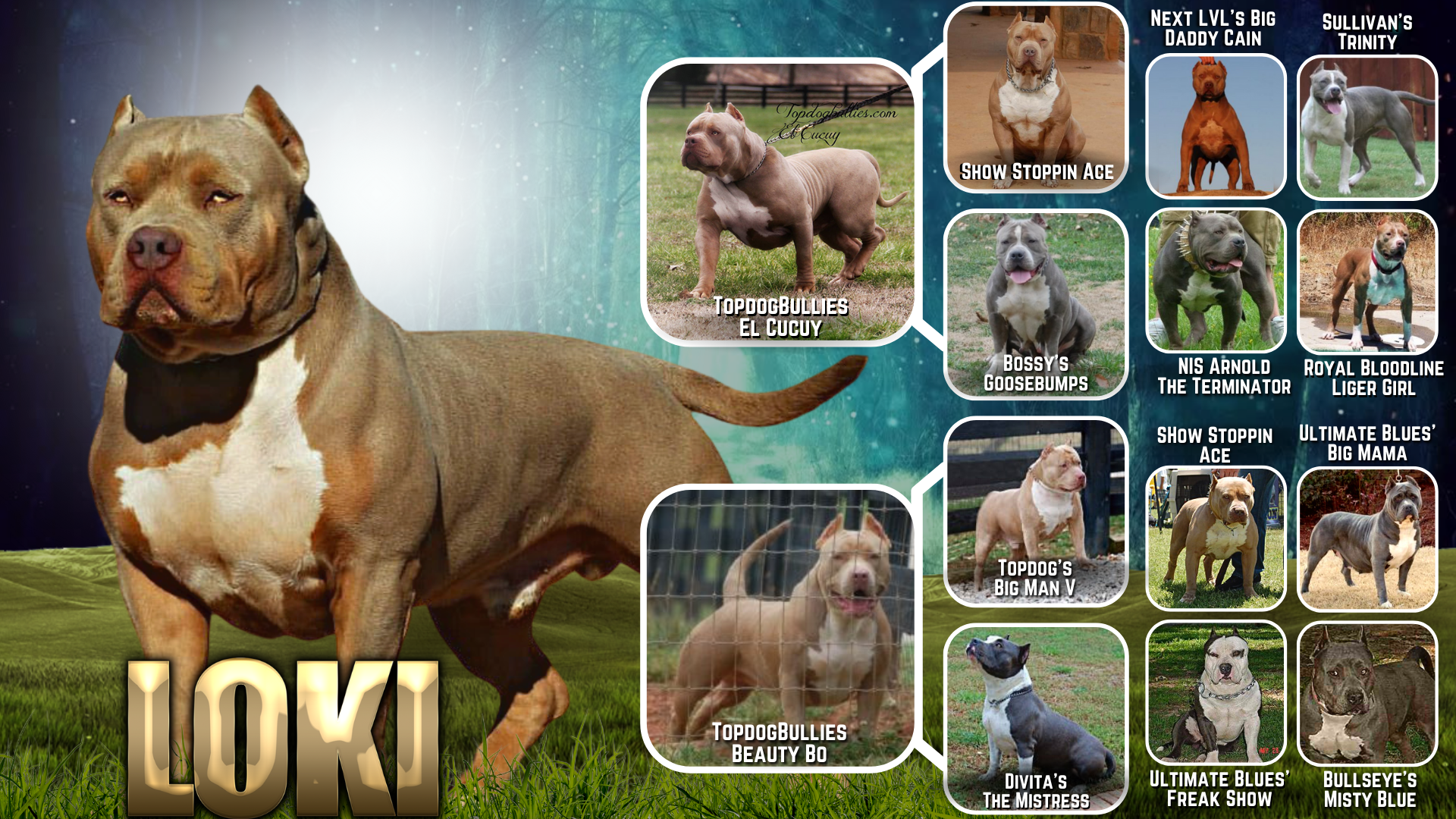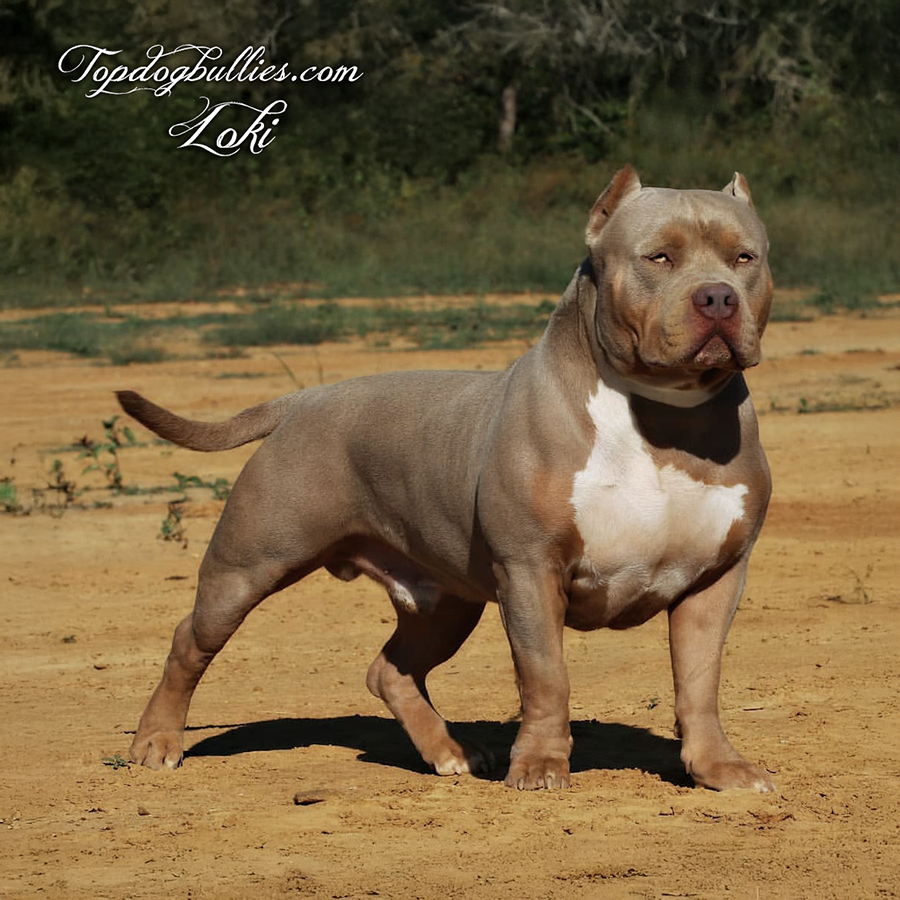WEIGHT: 100 lbs
HEIGHT: 19”
REG: UKC, ABKC
COLOR: Lilac Purple Tri
LINES: Greyline, Royal, Razor’s Edge

How is a lilac tri (purple tri) XL Bully or XL Pit Bull created?
Creating a lilac tri XL Bully, also known as a lilac tri XXL Bully or lilac tri XL Pit Bull, involves a strategic approach to breeding that focuses on specific genetic traits responsible for both the dog’s size and its distinctive coat coloration.
Understanding Coat Color Genetics
The lilac tri coat pattern is a result of the interaction between several genes:
Base Colors: The primary colors in dogs are black and red. The expression of these colors is influenced by various genes, including the Agouti gene, which determines the distribution of black and red pigments.
Dilution Genes: The dilution gene affects the intensity of the base colors. For instance, the presence of two copies of the dilution gene can transform black into blue and chocolate into lilac.
Tri-Color Pattern: The tri-color pattern, characterized by three distinct colors on the coat, is governed by the Agouti gene (specifically the ‘at’ allele). This pattern typically presents as a primary color with tan points and white markings.
Breeding for the Lilac Tri Coloration
To produce a lilac tri XL Bully, breeders aim to combine these genetic factors:
Chocolate and Blue Genes: Both parents should carry the genes for chocolate and blue coloration. When these genes are present together, they can produce the lilac hue in the offspring.
Tri-Color Pattern Genes: Both parents must carry the recessive ‘at’ allele of the Agouti gene to produce the tri-color pattern. Since this trait is recessive, it requires both parents to pass on the allele for it to be expressed in the puppies.
Considerations in Breeding
While achieving the desired lilac tri coloration is a goal for some breeders, it’s crucial to prioritize the overall health, temperament, and conformation of the dogs. Focusing solely on color can inadvertently lead to health issues if other important traits are overlooked. Responsible breeding practices ensure that the resulting puppies are not only visually appealing but also healthy and well-adjusted.
In addition to coat color genetics, breeders must consider the dog’s size and build to achieve the XL or XXL classification. This involves selecting breeding pairs that exhibit the desired size traits, ensuring that these characteristics are passed on to the offspring.







